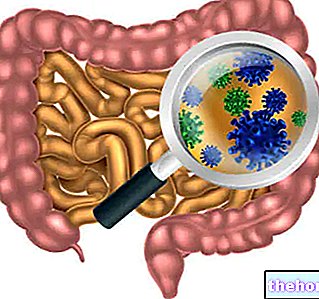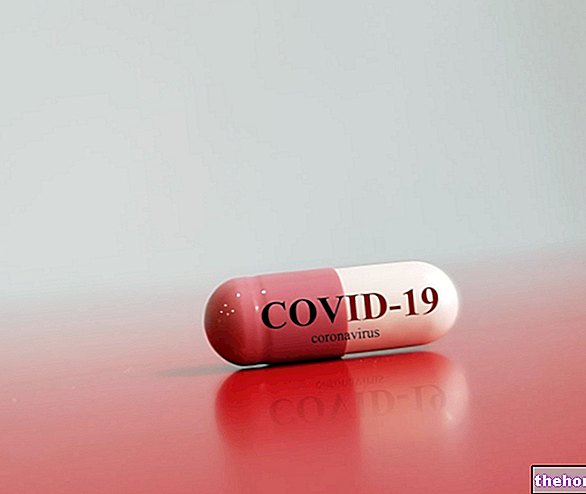Risk reduction goes through various methods
First of all, it is advisable to minimize exposure to pathogens, to maintain an adequate dietary intake but, above all, it is essential to optimize training. A well-trained person, then, knows how to express superior muscular work, thus reducing the physical effort that gives rise to the phenomenologies described above; moreover, a trained person breathes less laboredly and is less exposed to the risk of microtrauma. Finally, the reduction of psychological stress brings undoubted advantages even if it is often difficult to implement.

Much more realistically it is instead possible to practice vaccine prophylaxis, for all those diseases for which a vaccine is available.
Vaccine prophylaxis is recommended in all subjects at particular risk, such as the elderly, diabetics, heart patients, COPD carriers; It is advisable that the doctor and the specialist in Sports Medicine first of all get used to considering the athlete, especially the professional, as a subject at risk and therefore subject him to the appropriate maneuvers prophylactic vaccines.
In addition to the most common pathologies, such as the flu, or more serious pathologies, but still contractable in our country, such as tetanus, vaccination prophylaxis is particularly suitable for athletes who have to travel around the world to honor their competitive commitments. .
Vaccination of traveling athletes requires the consideration of several variables: the destination, the duration of the trip, the immune and health status, the age of the athlete, the possible presence of allergies and, not least in the case of athletes of female sex, the possible state of pregnancy, recalling how important sporting results have sometimes been obtained by pregnant athletes, as in the case of our canoeist Josefa Idem or the late Austrian skier Ulriche Maier.
The possible side effects of vaccines, the possible interferences between antigens in case of need, must also be evaluated polyvaccination, the time available before departure as well as the possible presence of epidemics in the regions where one has to go.
There are a number of pathologies for which it is possible to implement vaccine prophylaxis; pathologies such as hepatitis A and typhus are of particular interest, which are instead present in many areas of the globe and are difficult to prevent, if not with very strict hygiene rules which are sometimes difficult to implement.
Hepatitis A is the most common immunization-preventable infection in travelers. It is 40 times more frequent than typhus and 800 times more than cholera; the infection is viral and fecal-oral transmission, mainly through raw or undercooked seafood, vegetables, water. Symptoms include jaundice, anorexia, nausea, abnormal liver function tests, but the infection often goes clinically unnoticed.
Typhus gives rise to extremely variable clinical pictures ranging from asymptomatic infection, to the classic forms characterized by fever, general malaise, headache, loss of appetite, constipation or diarrhea, up to the most severe characterized by neurological involvement. The most feared complications are represented by intestinal perforation or hemorrhage and septic phenomena. The lethality is equal to 10-20% in the untreated forms. Worldwide, there are an estimated 17,000,000 cases per year with over 600,000 deaths; Africa, Asia, Central and South America represent the areas with the highest endemic. In Italy about 800 cases are reported annually, over 80% of which occur in the southern regions and islands.
The impact of influenza should not be underestimated, a pathology with a significant economic and social weight that determines a "high morbidity and excess mortality in the categories at risk." Influenza represents an important public health problem worldwide due to its ubiquity, contagiousness , antigenic variability of the virus, existence of animal reservoirs, epidemic / pandemic trend.
Furthermore, the severe complications, especially in those at risk and not least the economic cost, aggravate the impact of a disease which in Italy is the 3rd cause of death from infectious diseases, preceded by AIDS and tuberculosis, following frequent complications which include the aggravation of pre-existing chronic diseases such as pulmonary and heart disease. The vaccine is practiced seasonally by intramuscular inoculation.
Together with a valid training program that avoids excessive workloads or too limited recovery times, the vaccine can be of great help in the activity of a professional or amateur athlete, to allow him to perform sports activities in the best possible way and minimize the risk of infections.
An athlete with an adequate immune level is less susceptible to infectious episodes and ultimately more "performing"; just as specialists in Sports Medicine and coaches work hard to improve the musculoskeletal structure of the sportsman and make him less exposed to injuries and able to provide better performance, just as much attention must be paid to organic defenses.
After the first inactivated whole virus vaccines, research - aiming at greater tolerability - has made available split and sub-unit vaccines, in which the incidence of side effects is decidedly reduced, but the immunogenic effect is not optimal.
The most recent acquisition is represented by the virosomal vaccine, developed by the Bern Biotech laboratories, in which viral agents are incorporated in the lipid bilayer of liposomes, particles that are formed by hydration of the phospholipids and which allow the vaccine to obtain an optimal immunogenetic effect. without particular problems of "reactogenesis".
Virosomes offer the advantage of an "innate absence of toxicity; they are also biologically degradable, do not contain preservatives or detergents and allow a natural presentation of antigens to the immune system.
These are high-tech, safe and effective preparations that allow you to maintain an adequate level of immunity in vaccinated subjects, without inducing side effects in patients of all ages and physical conditions, including children under the age of twelve, the elderly. , immunocompromised or otherwise defied patients and subjects at high risk of infection, whom we must get used to considering sportsmen.




























